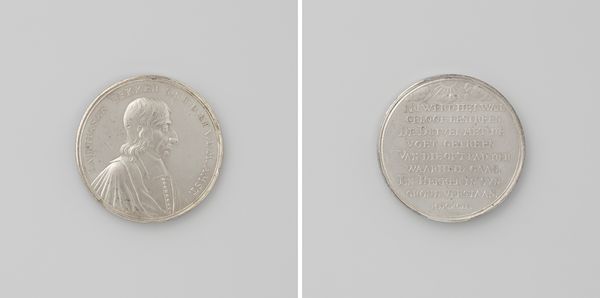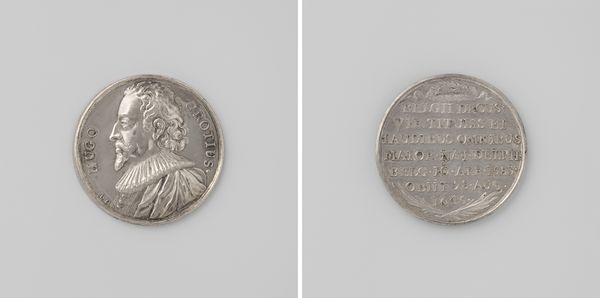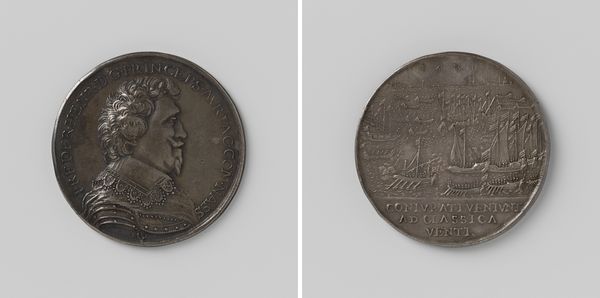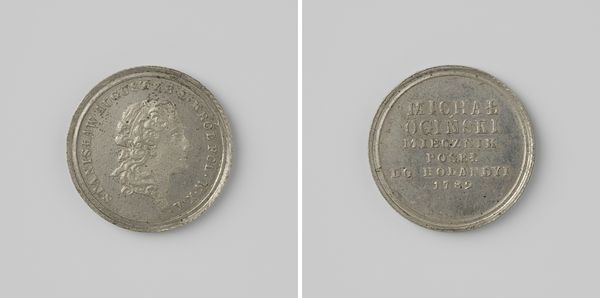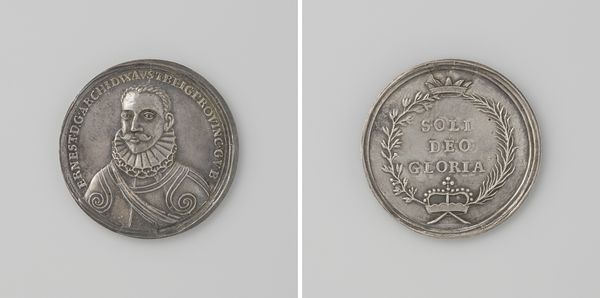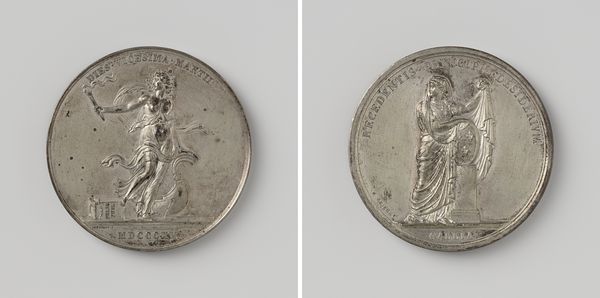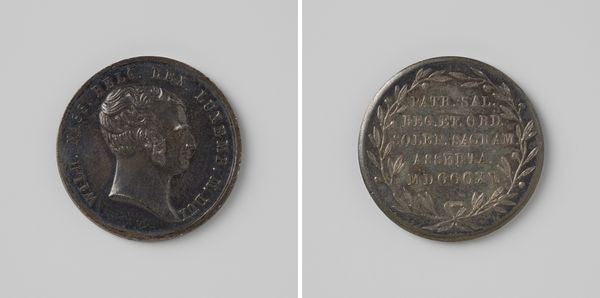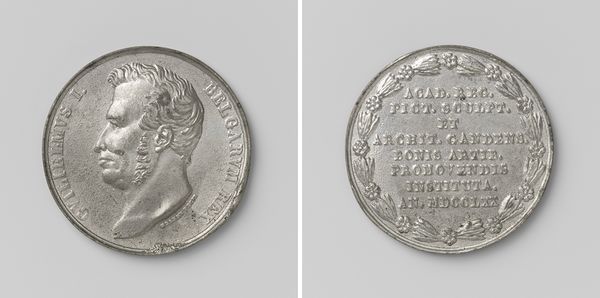
metal, engraving
#
portrait
#
neoclacissism
#
metal
#
history-painting
#
engraving
Dimensions: diameter 3.3 cm, weight 10.28 gr
Copyright: Rijks Museum: Open Domain
Curator: This is a metal engraving from 1787, "Terugkeer van Willem V te 's-Gravenhage", or "Return of Willem V to The Hague," by Johan George Holtzhey, here in the Rijksmuseum. Editor: My first impression is one of austere formality; the cold, hard metal conveys a message of power and rigid order. What do you make of this style? Curator: The work clearly fits into the Neoclassical movement with its emphasis on clarity, order, and idealized form, drawing upon the art of ancient Greece and Rome to invoke ideas about civic virtue and noble simplicity. It is essentially an exercise in how the medium embodies certain Enlightenment ideals. Editor: Absolutely, but let’s also consider how this “return” intersects with Dutch political complexities of the period. William V's return was facilitated by Prussian military intervention—a stark reminder of the power dynamics at play. Is the work meant to project a sense of triumphant restoration? To whom, exactly, is the victory? Curator: From a formalist perspective, the portrait's composition centers on Willem V in profile, his features meticulously rendered, but with minimal emotion on display. It is the engraving, and Holtzhey's handling of the material and form, that holds the weight. Editor: But that seeming lack of overt emotion—that's what gets to me! It points to the tension, the lack of popular support. The inscription on the reverse of the medal commemorates a very specific date, but its very existence implies the instability that precipitated the need for this "return" in the first place. It almost seems calculated to remind its bearer what they ought to feel about the Prince, as a political gesture. Curator: Interesting, that you read into its intention like that. My analysis emphasizes Holtzhey’s precision; see the crisp lines, the careful balancing of the composition, the overall effect he’s trying to render within the circular structure of the coin. It's a study in how metal itself conveys dignity. Editor: Well, to me, objects like this are historical arguments cast in metal. They testify to the unstable nature of power during this era, far beyond the cold materiality. Curator: I suppose then, in the end, we find agreement that it provides a glimpse into late 18th-century political sensibilities. Editor: Exactly—an argument you can hold in your hand, but whose meanings keep shifting under your fingertips.
Comments
No comments
Be the first to comment and join the conversation on the ultimate creative platform.

